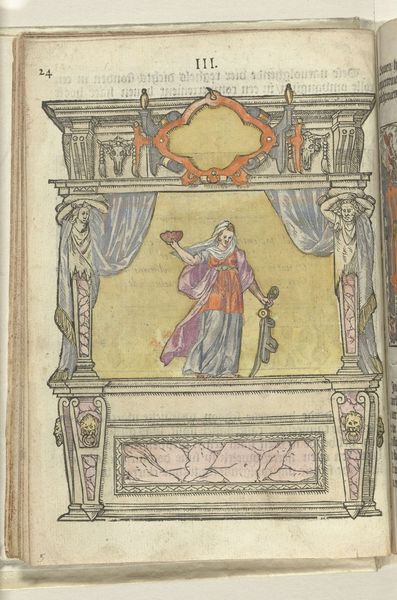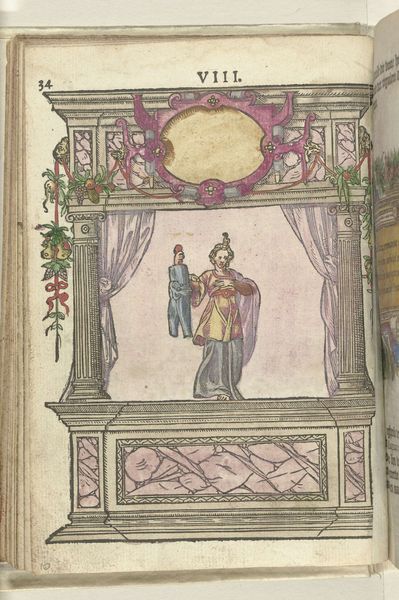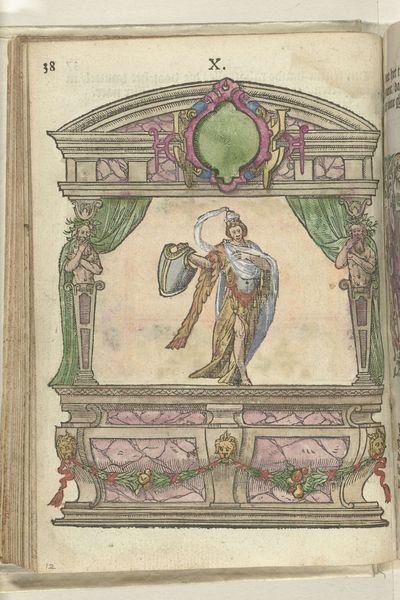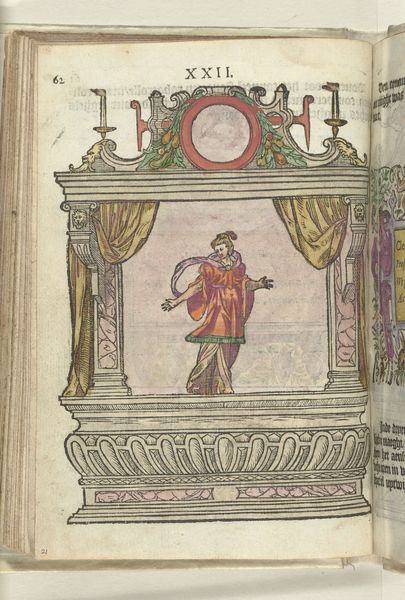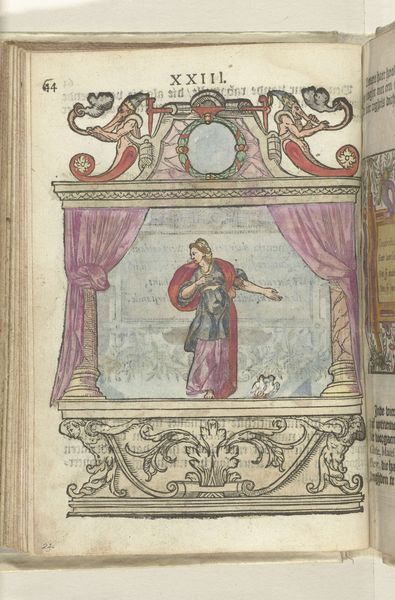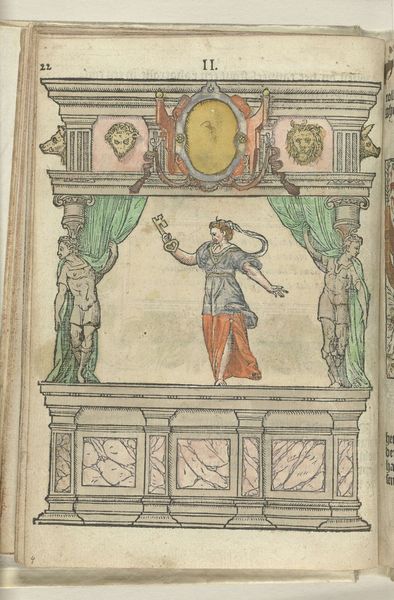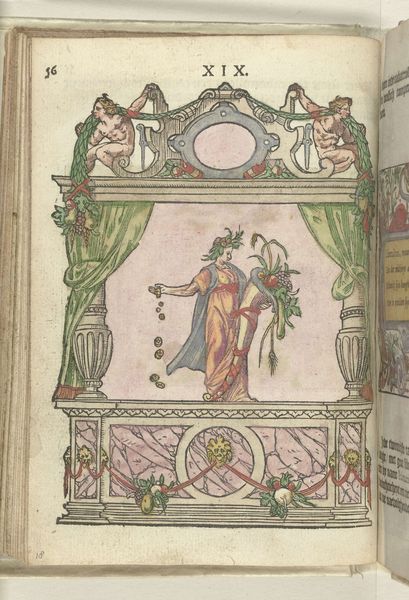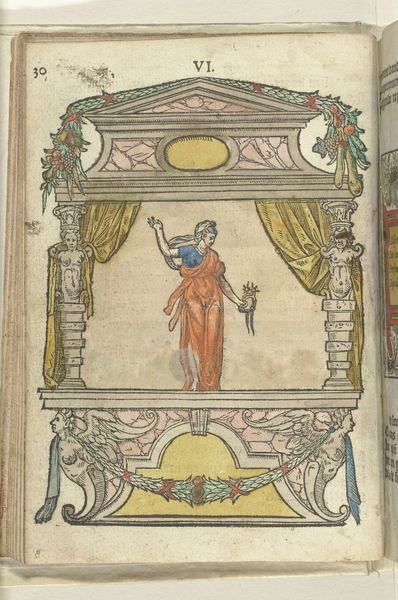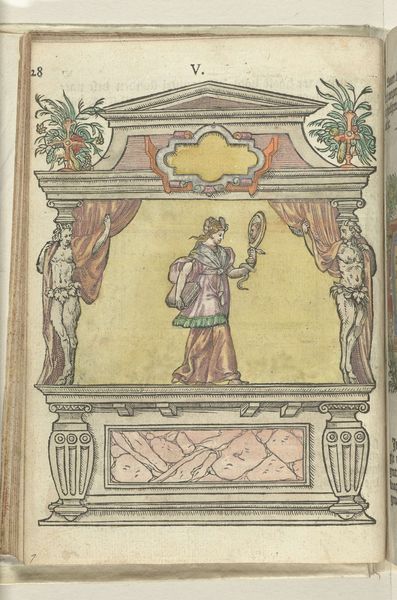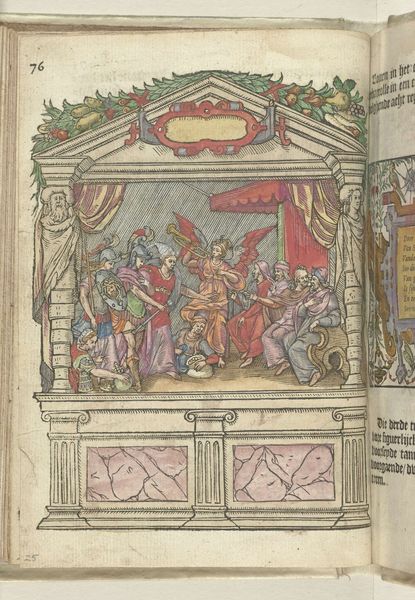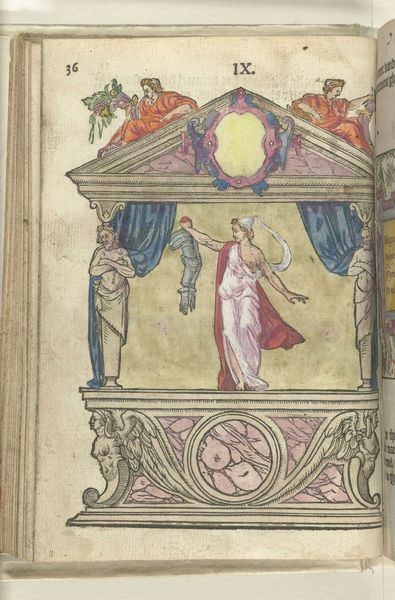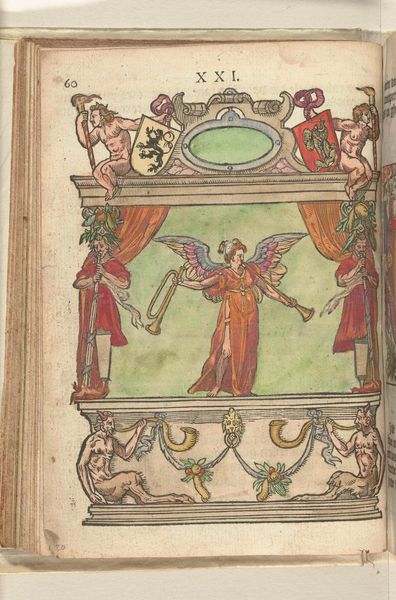
drawing, print, paper, engraving
#
drawing
#
allegory
# print
#
figuration
#
paper
#
11_renaissance
#
history-painting
#
northern-renaissance
#
engraving
Dimensions: height 155 mm, width 115 mm
Copyright: Rijks Museum: Open Domain
This engraving by Antoni van Leest, dating from 1578, depicts the personification of victory or triumph. In this period, such allegorical figures were not just artistic devices; they reflected a society deeply concerned with power, legacy, and moral virtue. Here, Victory is staged theatrically, drawing on classical motifs, with a proscenium arch framing the scene. The stage setting reflects the influence of the humanist movement, which looked back to classical antiquity for models of governance and civic life. This image was made in the Netherlands, during a period of intense political and religious upheaval. It’s difficult to say whether it is self-consciously conservative or progressive. Victory could refer to military success, religious triumph, or even personal achievement. To fully understand this image, we’d need to delve into the cultural history of the late 16th century Netherlands: researching the political climate, studying theatrical conventions, and examining the role of classical imagery in shaping social values. Only then can we appreciate the full complexity of this seemingly simple scene.
Comments
No comments
Be the first to comment and join the conversation on the ultimate creative platform.
